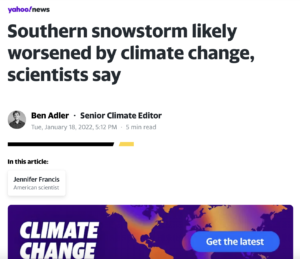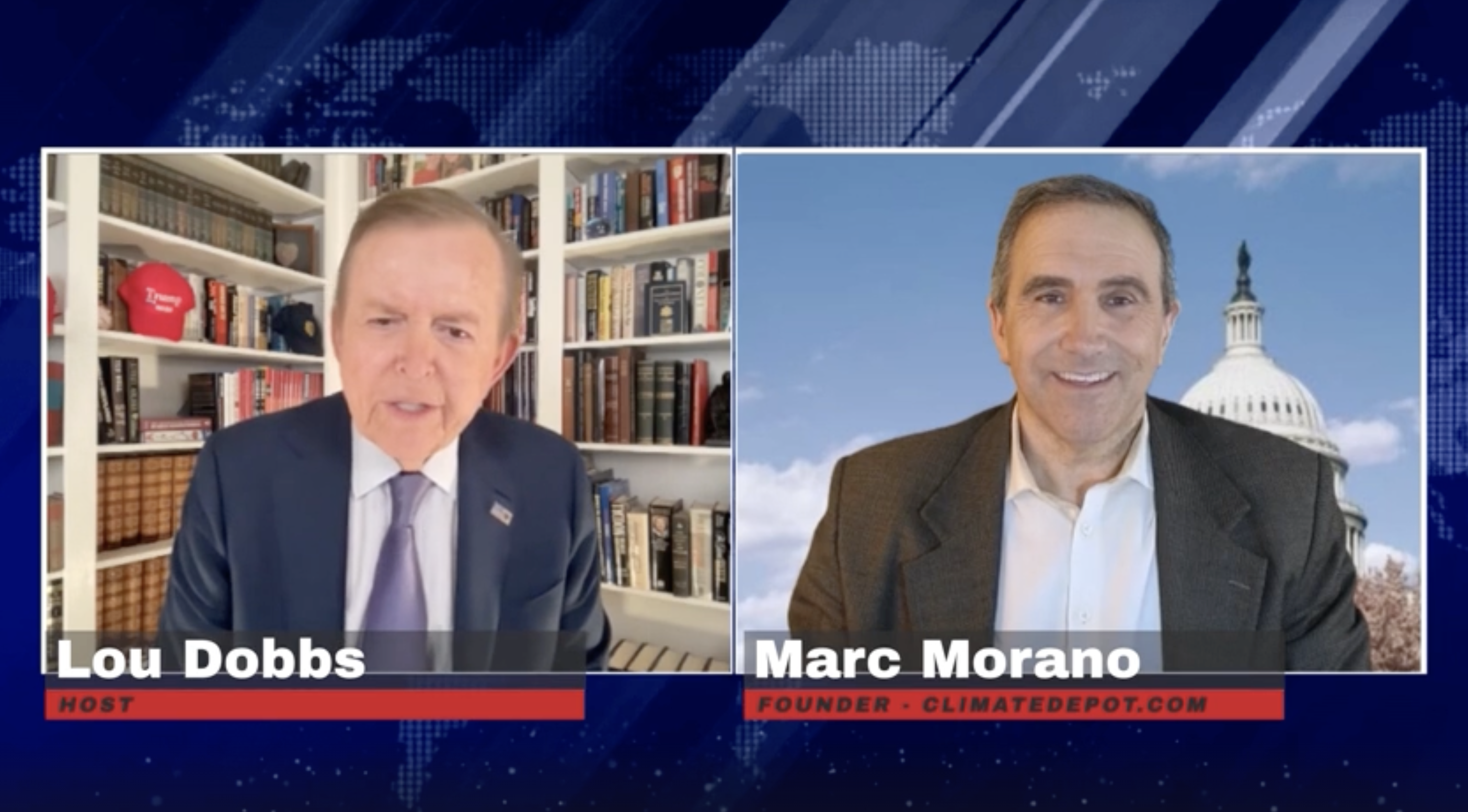Southern snowstorm likely worsened by climate change, scientists say
The snowstorm that battered the South this weekend, leaving thousands without power, was likely exacerbated by climate change, according to leading climate scientists.
It’s a counterintuitive suggestion because greenhouse gases are trapping heat and causing higher average temperatures. Sometimes winter weather is milder as a result. But in North America, especially the East Coast and the South, colder winds are blowing in with greater frequency because of how Arctic warming is distorting two phenomena: the jet stream, a band of air flowing west to east, and the polar vortex, a wintertime area of cold air near the North Pole.
“When we get a snowstorm hitting the Southeast like this, it’s always because there’s a big southward dip in the jet stream, basically over the Mississippi Valley, that’s the underlying cause of the snowstorm in that region, and kind of all along the East Coast,” Jennifer Francis, senior scientist at Woodwell Climate Research Center in Massachusetts, told Yahoo News. “When it dips southward like that, the Arctic air, the very cold air, can also penetrate very far south.”
This may be happening more often because the Arctic is warming faster than the rest of the Earth. The temperature differential between the Arctic and other regions powers the jet stream. With a decreasing difference in temperature, a weakened jet stream is more easily diverted.
“Climate change is causing the jet stream to take more of these southward dips and northward swings,” Francis said. Each southward dip causes a rebound with an adjacent northward swing. So extreme weather events like cold snaps and storms in one location can be accompanied by dry spells and heat waves somewhere else.
…
Recent research suggests that these disruptions of the polar vortex are happening more frequently now and that the cause is loss of Arctic sea ice, Francis said. She likened the polar vortex to a spinning top. If you poke the top, it tilts. Due to climate change, an emerging heat bubble over the Barents Sea near Norway and Russia “acts just like poking that top,” she explained. “It can cause the top to not just wobble, but collapse completely.”
…
Climate change also can lead to stronger snowstorms because of increased precipitation and ocean warming. Warmer weather leads to more evaporation of water and heavier rainfall, and warmer ocean temperatures lead to more intense storms. Just as that can mean more heavy rains and hurricanes in the summer, it can lead to strong winter storms, including snowstorms.
Americans should expect these trends to worsen, especially if greenhouse gas emissions continue unabated.
Meanwhile, the storm that crippled the South has now made its way north, dumping up to a foot of snow in parts of the Northeast. That region has experienced increased snowfall in recent years due to Arctic warming, according to research by Francis, Cohen and Karl Pfeiffer, a colleague of Cohen’s at AER. Atlanta, Boston, Des Moines, Detroit, New York, Salt Lake City, Seattle and Washington, D.C., are among the cities receiving significantly more snowfall, according to a 2018 paper published by the trio in Nature.
#
Global warming causes snowstorm in Southeast US.
Of course!🤣
One day we will read the headline:
"Global warming causes global cooling."https://t.co/zJheOu4l9m via @YahooNews
— Steve Milloy (@JunkScience) January 19, 2022






